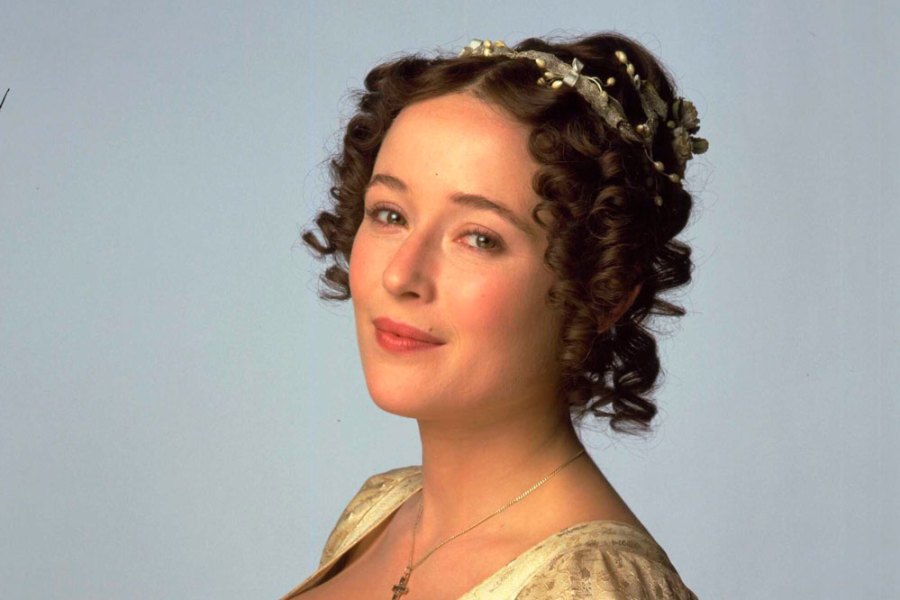Table of Contents
ToggleIntroduction
The characters that fill the pages of enduring tales are among the most enduring elements of literature. Some characters, like the mysterious Sherlock Holmes, the sad Jay Gatsby, or the courageous Katniss Everdeen, make a lasting impression on readers.
These characters’ emotional and intellectual resonance with the spectator is just as powerful as their deeds or the stories they propel. Characters that are written well go beyond mere fiction and become ingrained in the reader’s mind, lingering in their memory long after the story has concluded.
For many authors, the ultimate goal is to create characters that are so unforgettable. Characters must be more than just “well-written” or “interesting.” A character needs to be multifaceted, dynamic, and able to arouse strong feelings in the reader in order to really stand out.
It takes a lot of work, a firm grasp of storytelling skills, and a thorough understanding of human psychology to create characters that your audience will remember. But there is a huge reward when you do it correctly.
Why Do Some Characters Stand Out ?
Before we dive into the specifics of writing unforgettable characters, it’s important to understand why some characters seem to have a lasting impact. The answer lies in a combination of emotional resonance, complexity, relatability, and depth. Memorable characters tend to possess the following qualities:
- Emotional Depth
Characters who resonate with readers often evoke a strong emotional response. This could range from admiration, empathy, or even disdain. What makes them memorable is that these emotions feel real and are rooted in the character’s personal journey. - Relatability
Even if a character is set in a fantastical world or a time far removed from our own, they often share universal human experiences—love, loss, fear, or hope—that make them relatable to readers. A character who grapples with internal conflict, moral dilemmas, or the struggle for identity can feel strikingly real, no matter how fantastical their world may be. - Complexity and Layers
Memorable characters are rarely one-dimensional. They have strengths, flaws, desires, and fears. They might not always make the right decisions, but their choices reflect an underlying complexity that makes them feel fully realized. A well-rounded character often surprises readers because they do not fit into easy stereotypes or predictable patterns. - Growth and Change
Characters who evolve throughout a story are more compelling. Readers tend to remember characters who grow, learn, or transform in significant ways. Whether it’s overcoming personal fears, achieving redemption, or experiencing tragic downfall, a character’s arc adds layers to their identity and gives readers something to root for (or against). - Conflict
Characters are defined by the obstacles they face. Memorable characters are often engaged in both internal and external conflicts that drive their motivations and actions. These conflicts should feel genuine, creating tension that keeps readers invested in the character’s journey.
Now, let’s break down the fundamental strategies that will help you craft such characters.
Read more
1. Start with Strong Foundations: Characterization and Backstory
The foundation of any great character starts with a well-thought-out backstory. This doesn’t mean every detail needs to be revealed to the reader, but as a writer, you should know your character’s history and how it influences their actions in the present. Backstories help you understand why a character behaves the way they do, what drives them, and what they fear.
Key Considerations for Backstory:
- Childhood Experiences: Often, a character’s formative years are crucial to their development. Did they face hardship? Were they raised in an idyllic home? These early experiences can shape a character’s values, relationships, and attitudes toward the world.
- Family and Relationships: How does your character relate to their family and friends? Are they close to their parents, or are they estranged? Do they have any mentors or adversaries who influence their decisions? Relationships form the core of any character’s emotional landscape.
- Fears and Desires: What does your character want more than anything? And what do they fear most? Whether it’s love, power, or safety, desires drive your character forward. Conversely, their fears can serve as obstacles they must overcome, adding tension and stakes to the narrative.
- Flaws and Vulnerabilities: A perfect character is rarely memorable. It’s the flaws that make them real and relatable. Are they too proud, stubborn, or insecure? These imperfections are often what readers connect with most.
Example: The Backstory of Harry Potter
J.K. Rowling’s Harry Potter is an excellent example of how a rich backstory can shape a character. Harry’s traumatic past, his loss of his parents, and the burden of being “the chosen one” define his actions throughout the series. His vulnerability, mixed with a deep desire for belonging and justice, makes him someone readers root for.

2. Give Them Clear, Compelling Motivations
Every unforgettable character has a clear motivation—something they want or need to achieve. Motivations drive characters’ actions and decisions throughout the narrative. Whether these motivations are personal (a desire for acceptance, revenge, or love) or external (saving the world, protecting someone, or achieving power), they create direction in the story and give the character purpose.
Key Motivations:
- Self-Improvement: Characters who seek personal growth or redemption often resonate with readers. Think of Elizabeth Bennet in Pride and Prejudice, whose journey is not only about falling in love but also about overcoming her own prejudices and misunderstandings.
- Survival: In many genres, especially science fiction and dystopian fiction, survival is a key motivation. Characters fighting to stay alive in harsh, unforgiving worlds often provide a raw and emotional connection for readers.
- Love and Relationships: Many unforgettable characters are motivated by love—whether it’s the need for connection, the desire to protect a loved one, or the search for lost love. Examples include Jay Gatsby’s obsession with Daisy Buchanan or Romeo’s tragic pursuit of Juliet.
- Justice or Revenge: Characters driven by a sense of justice or the need for revenge tend to be highly compelling. Characters like Batman or Count of Monte Cristo embody the quest for justice or retribution, which shapes much of their actions and conflicts.
3. Make Them Multi-Dimensional
Flat characters are easily forgotten. To write a character that readers will remember, you need to give them layers. This means that your character should have a mix of strengths and weaknesses, contradictions, and nuances that make them feel like a real person. Multi-dimensional characters are unpredictable and rich with potential.
Techniques for Building Multi-Dimensional Characters:
- Contradictions: Real people are often full of contradictions. A character might be brave but also deeply insecure, kind but also vindictive. Embrace these contradictions to make your characters feel more authentic.
- Complex Relationships: No character exists in a vacuum. How your character interacts with others, whether it’s through love, rivalry, or friendship, reveals different facets of their personality. These relationships help develop their character and can serve as a mirror to the protagonist’s own growth.
- Moral Ambiguity: Characters who wrestle with moral dilemmas or face difficult choices that don’t have clear answers are often more compelling. Think of Walter White from Breaking Bad—he starts as a sympathetic character but gradually becomes morally ambiguous, making readers question their allegiance.
Example: The Depth of Atticus Finch
In Harper Lee’s To Kill a Mockingbird, Atticus Finch is a prime example of a multi-dimensional character. He is noble and selfless in his defense of Tom Robinson, but his character also carries moments of vulnerability and internal conflict, particularly in the face of deep-seated racism. This complexity makes him a truly unforgettable figure.
4. Put Them in Difficult, High-Stakes Situations
A character’s true nature is often revealed when they’re tested under pressure. It’s not enough to have an interesting backstory or deep motivations—your character needs to face challenges that force them to act. High-stakes situations provide an opportunity for your character to reveal their flaws, grow, or even succumb to their darker instincts.
Creating Tension Through Conflict:
- Internal Conflict: This is one of the most compelling ways to deepen a character. What does your character want, and what is stopping them from getting it? Whether it’s a moral dilemma, a past trauma, or a desire for redemption, internal conflict can add great depth.
- External Conflict: Whether it’s a villain, an oppressive system, or a physical threat, external conflict creates tension and tests your character’s resolve. This is where the stakes become personal for the reader. Does your character rise to the challenge or fall short?
- Moral Choices: Put your character in a position where they have to make tough moral decisions. Will they sacrifice their values for a greater good, or will they stay true to themselves? This type of conflict engages readers on an emotional level and makes the outcome more impactful.
Example: Katniss Everdeen in The Hunger Games
Suzanne Collins’ Katniss Everdeen is faced with life-or-death decisions from the outset of The Hunger Games. Her survival is at stake, but she also grapples with the morality of playing the deadly game and becoming a symbol of rebellion. The tension between her personal survival and larger societal change makes her a complex and memorable character.
Read more
5. Create Moments of Transformation
Perhaps the most impactful feature of unforgettable characters is their ability to change. Readers love witnessing a character’s transformation—whether it’s through personal growth, overcoming fear, or falling from grace. This transformation doesn’t have to be positive, but it should be meaningful.
Types of Transformation:
- Redemption: Characters who redeem themselves after making mistakes or falling into darkness are deeply compelling. Think of Ebenezer Scrooge in A Christmas Carol, whose transformation from miserly curmudgeon to generous benefactor remains one of the most iconic in literature.
- Tragic Downfall: Some of the most unforgettable characters meet their demise, often because of a flaw or an unchangeable aspect of their personality. Characters like Hamlet or Macbeth are defined by their tragic flaws, and their eventual downfalls are both inevitable and heartbreaking.
- Self-Realization: A character’s journey towards self-awareness or acceptance can be just as powerful as any external transformation. A character who learns to accept their true self or confront their deepest fears can resonate deeply with readers.

Example: The Transformation of Elizabeth Bennet
In Pride and Prejudice, Elizabeth Bennet’s transformation is one of personal growth. Initially quick to judge others based on first impressions, she learns to challenge her own prejudices and values character over social standing. Her transformation from a proud, independent young woman to one who values humility and emotional connection is what makes her such a memorable character.
Read more
FAQs
1. How do I make a character memorable without making them perfect?
The key to creating a memorable character is giving them flaws and vulnerabilities. Characters who struggle, make mistakes, or face moral dilemmas are much more relatable and human than perfect heroes. The more real and complex their flaws, the more readers will connect with them.
2. How do I write a character with a unique voice?
A unique voice often comes from understanding your character’s backstory, personality, and worldview. Pay attention to their tone, speech patterns, and inner thoughts. Is your character formal, sarcastic, shy, or blunt? Their language should reflect their emotional state and experiences.
3. How do I balance a character’s strengths and weaknesses?
Characters should have a mix of both. Weaknesses create vulnerability and tension, while strengths offer hope and potential for growth. Think about how your character’s strengths could be a double-edged sword. For example, a character who is overly confident may inspire admiration, but it can also lead to hubris and mistakes.
4. How do I show a character’s growth over time?
Growth often comes through conflict. Put your character in situations that challenge their beliefs, test their limits, and force them to confront their flaws. This will naturally lead to changes in their perspective, actions, and relationships over the course of the story.
5. Should all characters change over the course of a story?
Not necessarily. While many unforgettable characters undergo transformation, others may remain largely the same, especially in stories where the central theme is about resisting change or accepting fate. However, even static characters should experience inner conflict or reveal new layers as the story progresses.
















